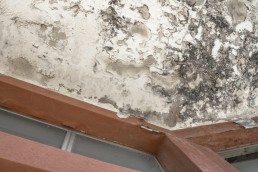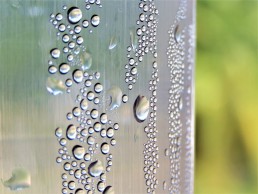How to Prevent and Treat Woodworm
Woodworm are wood-eating larvae. There are many species of these beetles, but the common furniture beetle (Anobium punctatum) is the most widespread in the UK. These beetles bore holes in wood in the larval stage and feed on it. Despite what their name may suggest, the common furniture beetle is just as likely to tunnel through building timber like joists and floorboards.
There are various signs that you may have a woodworm infestation. The most telling sign of woodworm is the exit hole they leave behind from breaking through the surface. These holes are typically between 1mm to 1.5mm in diameter but can be larger for species like the House Longhorn beetle. Powdery dust around the exit holes is another visible sign of an infestation.
Woodworm can be a serious issue, especially when an infestation is active on the structural timbers of a property. Here we’ll look at how to prevent and treat woodworm before it can cause even more damage.
Woodworm Prevention
Even if there are none of the tell-tale signs of woodworm, taking preventative measures can safeguard your property against these invasive pests.
High humidity levels – above 60% – in a home are more likely to lead to an infestation. Keep your home well ventilated to prevent the timber from becoming moist. Consider investing in a timber moisture meter, a tool that allows you to measure moisture levels in wood. Basement waterproofing is a must, as these areas are prone to damp.
Another preventative measure to protect against woodworm infestations is to apply varnish to wood. Varnish is a clear protective finish that essentially acts as a seal, as it prevents water from penetrating through. You can buy wood varnish from any hardware store or online.
Woodworm Treatment
Woodworm treatment for common furniture beetles is fairly straightforward in most cases. If the infestation is minor, you can treat it yourself using treatment products. There are treatment fluids available that kill larvae and adult beetles. Simply spray or paint the treatment fluid on the affected wood. This helps to prevent any emerging woodworm beetles and prevents them from laying more eggs. Any structural timbers that have been weakened as a result of an infestation should also be removed and replaced with treated timber.
For more severe cases of woodworm, we strongly recommend professional treatments. The precise method of treatment can vary depending on the species that has infested your property. For example, treatment fluids can be used for common furniture beetle. But other species like the House Longhorn beetle cause more extensive damage, so the timber would need to be drilled to inject a gel or paste woodworm treatment.
In either case, getting a professional site survey is highly recommended to identify the extent of the infestation and the best treatment option.
Have you noticed any signs of woodworm in your property? Then contact Danford Brewer & Ives today on 01765 804050 or via our online form, and we can arrange a site survey for a small fee, which is refundable if you proceed with the full works.
10 Signs of Rising Damp
Rising damp is when moisture is present on the walls of a building. It occurs when water from the ground rises through the walls as a result of capillary action. This means that groundwater is absorbed through small openings, such as thin gaps and holes. Building materials like stone and brick are particularly susceptible due to their porous structure.
Rising damp is more common in older buildings, but it can also occur in modern buildings if they do not have proper damp proofing or the damp-proof course (a waterproof layer built in the wall) is damaged. If rising damp is left untreated, it can cause extensive structural damage to your property.
Here are ten common signs that your property has rising damp.
1. Tide Marks
The most common sign of rising damp is a visible tide mark, typically about a metre high above floor level. These marks are caused by evaporation of the moisture and salts from the ground and can be visible on the interior and exterior of a building.
2. Damp Patches
Another indication that your property is affected by rising damp is the presence of damp patches or water stains on your walls. These are typically yellow or brown (or a combination of the two) in colour and are visible above the skirting board.
3. Peeling Wallpaper or Paint
Rising damp increases moisture levels within your walls, which can cause the wallpaper or paint around the skirting board to start peeling.
4. Rotting Skirting Boards
Along with visible damp patches and peeling wallpaper, rising damp can also cause the skirting boards that cover the lower part of a wall to rot or decay. Skirting boards are mainly for decorative purposes, but rising damp can be more serious if structural timbers start to rot.
5. Black Mould
Black mould is characterised by dark spots and is especially harmful to your health. It can spread over larger areas if the moisture is not dealt with. Black mould is a clear indication that dampness is affecting the area.
6. Formation of White Deposits
Efflorescence is a white deposit that is commonly found on porous surfaces, such as brick, stone, and concrete. The formation of these deposits occurs when water dissolves the natural salts within the materials and pushes them through to the surface.
7. Floor Coverings Lifting
Excessive moisture levels may push through a building’s concrete slab, causing the floor coverings to lift up or become loose.
8. Musty Odour
Even if the signs of rising damp aren’t obvious or visible, you can often smell damp or a musty odour around the affected areas.
9. Discolouration of Exterior Walls
Rising damp can cause discolouration on exterior walls due to the groundwater pushing through the porous materials. Examples include mouldy spots and black stains.
10. Corroded Bricks and Mortar
Brick is an extremely durable building material, but it can start to corrode if it stays wet for prolonged periods or the moisture problem is left untreated. The mortar between the bricks can also lose its adhesive properties and turn crumbly.
If you recognise any of these signs, then we strongly recommend damp proofing your property as soon as possible to prevent any further damage. Contact Danford Brewer & Ives on 01765 804050 or fill in our online form to arrange a site survey and have our professionals treat your rising damp problem.
The Difference Between Rising Damp and Condensation
Dampness occurs when unwanted moisture is present in the structure of a building. It’s a major problem that affects many properties, as it can lead to growth of mould and even cause extensive structural damage. There are different types of damp, but rising damp and condensation are two of the most common that you might find in your home.
Being able to tell the difference is important. The type of damp affecting your property will determine the best treatment method and how to prevent it from occurring again. Here we’ll look at the differences between rising damp and condensation, and common signs to look for.
What Is Rising Damp?
Rising damp occurs when moisture from the ground moves through a wall via capillary action – narrow spaces such as cracks and small holes that push the flow of water upwards. Materials like concrete, stone, and brick are susceptible to rising damp because of their porous structure. Rising damp is common in older structures, but modern buildings can also be affected if the damp-proof course is damaged.
Here are common signs of rising damp:
- Tide marks or water stains
- Peeling plaster or wallpaper
- Rotting skirting boards
- Black mouldy spots
- Floor coverings lifting up
- Visible white deposits
- Damp or musty odours
These signs can be visible on the interior and exterior of a building. Rising damp often leads to timber decay, which can cause structural damage to the property if left untreated. Treating rising damp isn’t just a matter of replacing the plaster or skirting boards. The source of the problem itself needs to be treated or the problem will recur.
Treating rising damp typically consists of removing and repairing all affected areas, and installing a damp-proof course (a waterproof horizontal strip) directly into the wall above ground level. The damp-proof course prevents groundwater from flowing through the wall. Because of the work involved, professional damp proofing is strongly recommended.
What Is Condensation?
Condensation is another damp problem – perhaps the most common – that affects all property types. It occurs when warm air comes into contact with cool surfaces. Condensation frequently occurs in rooms that have a lot of moisture, such as bathrooms and kitchens.
Common signs of condensation include:
- Water droplets on window panes or walls
- Appearance of black mould
- Peeling wallpaper
- Musty smells
If condensation isn’t treated right away, it can develop into longer-lasting problems. These can include damage to the paint or plaster, and the growth of mould across a surface. Mouldy environments are a serious concern, as they can become a health hazard for you and your family.
Improving the ventilation of moisture-prone areas can help to reduce condensation problems. This can be as simple as opening windows and using a dehumidifier or an extractor fan to control humidity levels. Regularly wiping down walls and window frames with soapy water can also help to prevent the growth of black mould.
If problems like rising damp and condensation continue to plague your property, contact Danford Brewer & Ives on 01765 804050 or via our online form to have our damp-proofing specialists conduct a full site survey.



